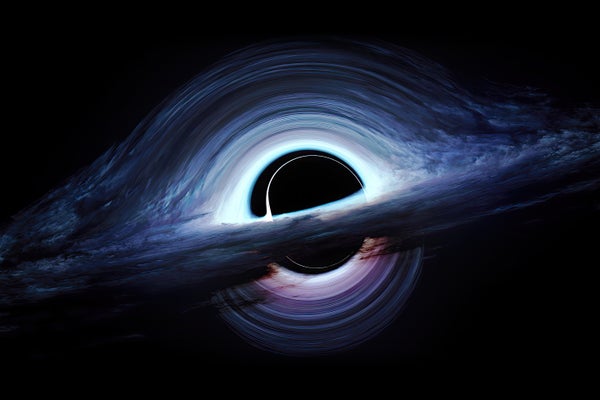September 24, 2024
5 min read
Dark Matter Could Be Hiding Out as Atom-Sized Black Holes
The universe’s hidden mass may be made of black holes, which could wobble the planets of the solar system when they pass by
This story sounds wild—even incredible. Black holes! Dark matter! Jostling planets! Yet the scenario is plausible—and testable soon.
Black holes the size of an atom that contain the mass of an asteroid may fly through the inner solar system about once a decade, scientists say. Theoretically created just after the big bang, these examples of so-called primordial black holes could explain the missing dark matter thought to dominate our universe. And if they sneak by the moon or Mars, scientists should be able to detect them, a new study shows.
Such black holes could have easily arisen right after the universe was born, when space is thought to have expanded hugely in a fraction of a second. During this expansion, tiny quantum fluctuations in the density of space would have grown larger, and some spots may have become so dense that they collapsed into black holes scattered throughout the cosmos. If dark matter is fully explained by such black holes, their most likely mass, according to some theories, would range from 1017 to 1023 grams—or about that of a large asteroid.
If primordial black holes are responsible for dark matter, they probably zip through the solar system about every 10 years, a new study found. If one of these black holes comes near a planet or large moon, it should push the body off course enough to be measurable by current instruments. “As it passes by, the planet starts to wobble,” says Sarah R. Geller, a theoretical physicist now at the University of California, Santa Cruz, and co-author of the study, which was published on September 17 in Physical Review D.* “The wobble will grow over a few years but eventually it will damp out and go back to zero.”
On supporting science journalism
If you’re enjoying this…
Read the full article here







